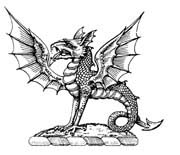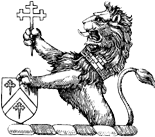
Lenten Wood, Easter Fire
ON HOLY GROUND
One day, when I was a child, I ran toward a tree I wanted to climb, then stopped suddenly to stare in disbelief at the giant thorns sprouting all over its trunk. This was my first sight of a locust tree. It was growing along a fencerow that my father was clearing that day at the back of our farm. Why God would ever create so sinister a tree was beyond my reckoning.
The thorns on a locust tree can be six inches long, with smaller thorns sprouting from the larger spikes. They grow in ghastly clusters all about the trunk of the tree and singly along the branches and twigs.
In the years since then, I have had to contend, as a woodsman, with the physical aspects of locust trees, but this first encounter was surpassingly theological, for my father, noticing my stunned reaction, laid aside his axe and pulled down a branch for my inspection. “These are dangerous thorns,” he said protectively. Then he added, “They’re the kind that were used on Jesus.”
They did indeed look like the pictures I had seen in our Bible. I nodded my agreement. My father then took his axe to the tree. As he swung at the trunk, I looked for a place to run when that wicked tree would give its final shudder and fall to the earth. I was happy when its thorns veered for the ground beneath a slow, creaking scream of defeat.
You May Also Enjoy
Lear is able to pull back from his obsession to pledge that "I will be the pattern of all patience"; patience, he knows, is the remedy he needs if he is to retain his sanity.
Review of Witness edited by George Sanderlin
The only place in the Middle East where Christians face no restrictions on the practice of their faith is Israel, where they comprise two percent of the population.

